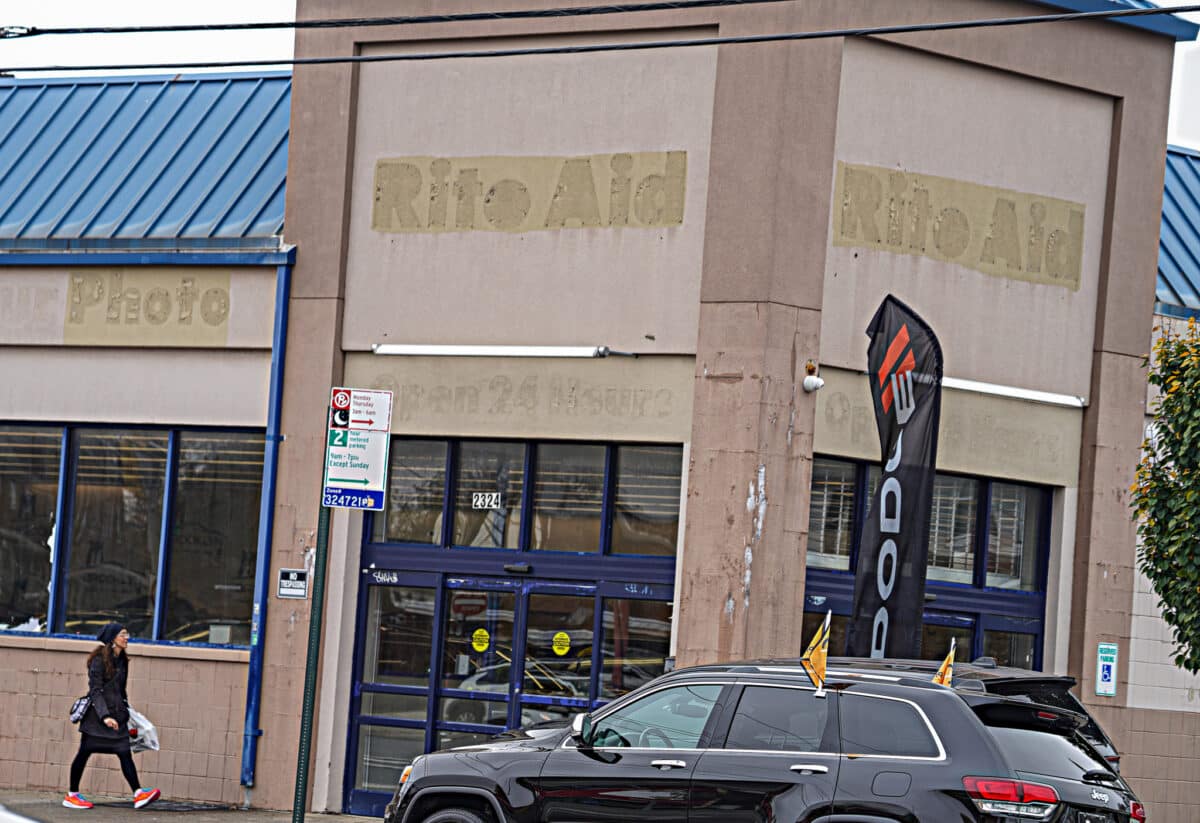Brooklyn Lost 50 Chain Stores in 2023 Amid Citywide Decline, Study Shows
National chain stores in New York City are closing down at an historic pace, according to one study.

A shuttered Bed Bath & Beyond store in Sunset Park. Photo by Susan De Vries
By Aidan Graham
National chain stores in New York City are closing down at an historic pace, according to one study.
Researchers with the nonprofit Center for an Urban Future released their latest report on the state of chain stores in New York City, which revealed a startling economic reality for national retailers that once packed bustling shopping strips across the five boroughs.
According to the analysis of brands that feature store locations nationwide, 2023 saw a 3.1 percent downtick in the number of national retailer outposts in the city — marking the second-steepest decline since the think tank began analyzing national chains in 2008. In Brooklyn, chain stores dropped 2.9 percent in 2023, from 1,722 to 1,672, a loss of 50 locations. The only year with a bigger decline in the number of chain stores was 2020, when the Covid-19 pandemic forced many of those businesses to shutter, and customers were wary of person-to-person interaction.
Even though personal health is no longer driving customers away in droves, the prevalence of remote work and the rise of e-commerce have decimated the business viability of many brick-and-mortar stores, according to the study.
“Our 2023 State of the Chains report underscores the challenges that many national retailers are facing in New York, including hybrid work and the growth of e-commerce, and suggests that some of the changes we’ve seen to the retail market in recent years may be here to stay,” said Jonathan Bowles, the executive director of Center for an Urban Future.
Borough-by-borough loss of chain stores
The Center for an Urban Future study shows that the number of chain stores in the city in November 2023 was around 13.8 percent less than the peak of late 2019, as consumers now have 1,097 fewer chain store options than before Covid.
That trend is true across all five boroughs, as each of them sit more than 5 percent below 2019 levels — but Manhattan was hit the worst.

Once filled with daily work commuters, the borough now sits comparatively empty during peak business hours — prompting chain retail brands to operate 545 fewer stores now than in 2019, representing an 18.3 percent decline.
Brooklyn saw a 10.9 percent drop, which is similar to the 11.3 percent downturn in Queens. Bronx chain stores suffered the most outside of Manhattan, as the borough now features 13.8 percent fewer chain retail stores than it did in 2019.
Staten Island was spared, relative to the other four boroughs, as Richmond County is now home to just 5.5 percent fewer national brand outposts.
Which industries were hit the hardest?
While the pandemic prompted more customers to do their shopping online, thus speeding up an already growing trend, it also ushered in online shopping in industries that had previously been almost entirely not operational on the web — particularly pharmacies.
Pharmaceutical distributors, which are subject to strict regulation, were allowed more leeway to sling their prescriptions online during Covid, and customers have largely not returned to the stores that dominated the previous decade. Most notably, Rite Aid shuttered more than half of its store locations (55 in total) since 2019, while Duane Reade closed 16 stores and CVS reduced its footprint by four stores.
Outside of the legal drug industry, cell phone stores marked the other biggest source of the decline in chain stores in the Big Apple, according to the study.
T-Mobile, for example, closed 88 stores, while AT&T saw 18 closures, and Verizon had nine closures.
After pharmacies and cell phone stores, merchandise sellers (including stores selling clothes, shoes, and luggage), were the third biggest category responsible for the drop in brick-and-mortar stores.
What now?
The repercussions of retail store decline in New York are likely to ripple throughout the city’s economy for years to come.
“After two years of modest growth, we saw chain store closures across the five boroughs, with most national retailers not coming close to reaching their pre-pandemic levels,” said Bowles.
In addition to the lost tax revenue generated by the stores in previous years, which evaporates along with their “Open” signs, the trend is a troubling one for jobs.
Thousands of New Yorkers were historically able to find work at national chain stores, but as those locations shuttered, it potentially leaves fewer opportunities for employment and the blight of empty storefronts on the street. It can also mean lower rents for commercial landlords.
But, at least in Brooklyn, chain store closures can also translate into opportunity for local entrepreneurs, startups, and mom and pop retailers. New businesses took off in Brooklyn following layoffs after the subprime mortgage crash of 2008, and surged again during and after the pandemic. — additional reporting by Cate Corcoran
Editor’s note: A version of this story originally ran in amNY. Click here to see the original story.
Related Stories
- L Train Vintage Takes Over Hardware Store on Broadway as It Expands Presence in Bushwick
- Brooklyn Roasting Company, Apartments Replace Williamsburg Old-Timer Klenosky Paint
- Century 21 Folks Detail Plans to Transform Original Bay Ridge Location Into ‘Urban Retail Hub’
Email tips@brownstoner.com with further comments, questions or tips. Follow Brownstoner on Twitter and Instagram, and like us on Facebook.









What's Your Take? Leave a Comment